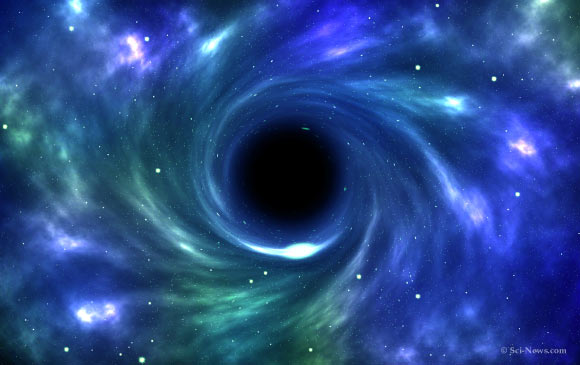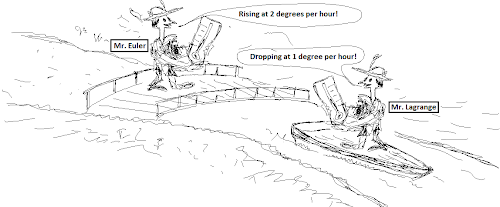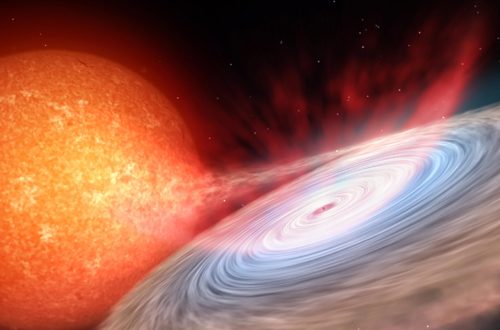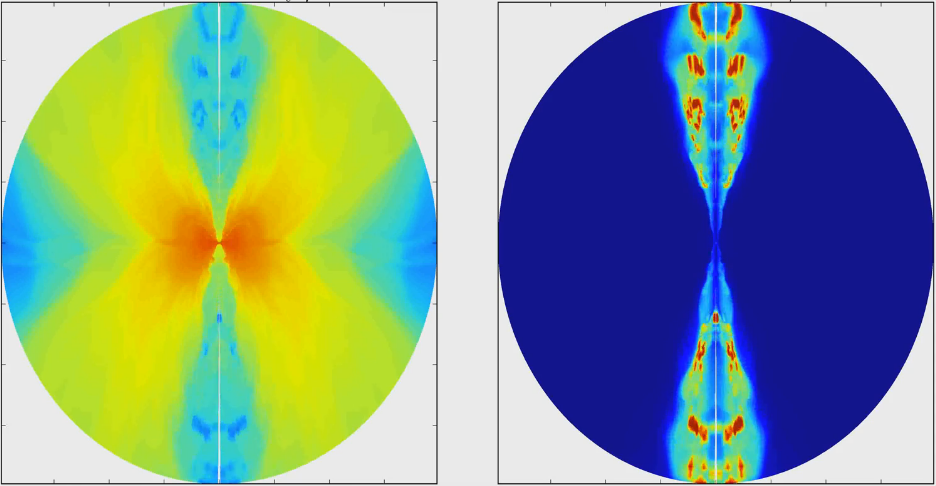In part II we saw that in a non-rotating black hole, the spatial and temporal coordinates are exchanged. Now we can take a step further, to consider the case of a rotating black hole. The line element in such spacetime has very complicated coefficients, but we don’t need the specific expressions here. So let’s just represent them in terms of the metric components:

From the specific forms of those coefficients, we know that the dt2 and dϕ2 terms are always positive while the dtdϕ term is negative.
What differs from the non-rotating case is, here the gtt and grr don’t switch signs at the same place, but at rH and rE respectively. rH is the event horizon; rE is called the static limit, lying out of the horizon (these two surfaces converge at the poles). The regions inside of rH and outside of rE are similar to the two regions in the non-rotating case.
The region in between is a unique feature called ergosphere, where both the coefficients of dt2 and dr2 are positive. Thus in the ergosphere, there is no purely temporal coordinate at all! Compensating those, the only possibility to keep ds2 negative comes from the cross term dtdϕ, which must be non-zero. This indicates that in the ergosphere, everything is forced to co-rotate with the black hole due to the frame dragging effect of spacetime. Here the meaning of “static limit” is evident: within that surface, it’s impossible to remain at rest in the azimuthal direction.

Going through the discussions so far, can you discriminate between space and time now? Yes! Space and time create different types of intervals. In usual configurations, space is spacelike and time is timelike; however, in black holes, space and time swap their roles, while in the exceptional case of the ergosphere around rotating black holes, there doesn’t exist a time coordinate of conventional sense.





